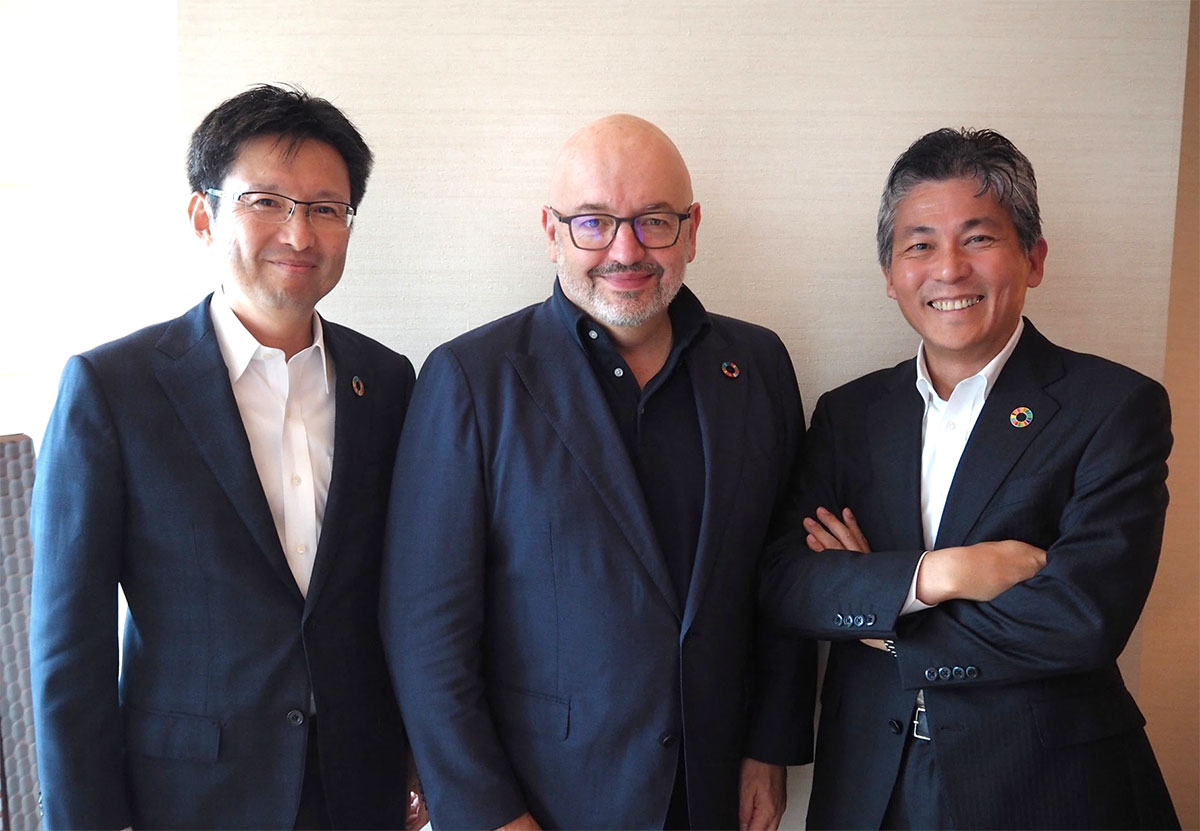
From left: Hihara of NRI, Peter Bakker of WBCSD, Noguchi of NRI
Nomura Research Institute, Ltd. (hereinafter "NRI" has been holding dialog with external experts every
year since
FY2010 in order to understand global sustainability trends and reflect those trends in management
strategy and risk
management.
At the FY2023 dialogue, Peter Bakker (President and CEO of the World Business Council for Sustainable
Development
(WBCSD)*), Takeshi Hihara (Senior Corporate Managing Director in charge of Sustainability Promotion),
and Tomohiko
Noguchi (Senior Corporate Managing Director in charge of DX), discussed the process of solving social
issues through
DX3.0 and the collaboration between companies and WBCSD.
-
*
A coalition of about 200 CEOs of companies committed to sustainable
development
(Ref.) World Business Council for Sustainable Development (WBCSD) (External Site)
Participants
(Affiliation and position as of October 2023)

Peter Bakker
WBCSD President & CEO
For a decade (since 2012), Peter has led WBCSD based in Geneva, Switzerland. WBCSD is the
premier global,
CEO-led community of over 200 of the world’s leading sustainable businesses working collectively
to
accelerate the system transformations needed for a net zero, nature positive, and more equitable
future.
He is a distinguished business leader who, until June 2011, served as CFO and then CEO of TNT
NV, the global
transport and logistics company. He has been recipient of the Clinton Global Citizen Award
(2009) and the
Sustainability Leadership Award (2010). Peter serves as a member of several corporate
sustainability
advisory boards.
He received the royal order Officer of the Order of Orange-Nassau in 2018 in recognition of his
long-lasting
commitment to engaging business in tackling global sustainability issues.
He was named as one of TIME Magazine’s 100 Most Influential Climate Leaders in Business for
2023.
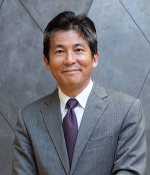
Tomohiko Noguchi
Senior Corporate Managing Director, NRI
In charge of DX

Takeshi Hihara
Senior Corporate Managing Director, NRI
In charge of Sustainability Promotion
Introduction to NRI’s business model and its growth story
Hihara (NRI): Before jumping onto the DX business, I would like to shed some light on the business model and growth story of NRI.
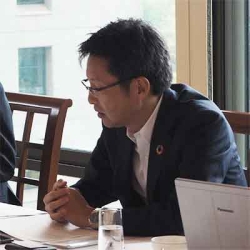
- Overview of NRI group's Business Model
-
Growth story outlined in the V2030 long-term management vision of the NRI Group
- NRI distinguishes three levels of digital transformation, i.e., DX 1.0 for process digitalization, DX 2.0 for business model digitalization, and DX 3.0, which represents the primary focus for 2030. DX 3.0 signifies a social digital transformation with a far-reaching impact on multiple companies and industries.
- Another crucial strategic direction is Global Expansion, and we plan to extend its business domain to North America, in addition to Asia and Australia.
Introduction to NRI’s DX business
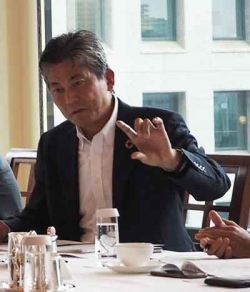
Noguchi(NRI): DX3.0 emphasizes social transformation by creating “Digital social capital” with the help of various fields such as Social DX, Value Chain DX, and Infrastructure DX. DX 3.0 serves as a crucial element of NRI's strategy as it represents a business-oriented approach to addressing societal challenges. I believe that profitable ventures are essential for the sustainable development of projects that aim at addressing social issues.
*Digital Social Capital: Infrastructure and services with new value created by digital technology
Growth Story of the NRI Group and DX3.0 Business Approach
NRI:Please tell us what you thought about the "Growth Story of the NRI Group” and “DX3.0 Business approach" in regards to sustainability.
Mr.Bakker (WBCSD) : :Identifying social challenges that align with a company's expertise can be a daunting task, especially when there are several issues demanding attention. I find DX3.0 fascinating, and I commend NRI for its remarkable capability to identify global challenges such as climate change, food security, water resource management, preservation of natural ecosystems, human rights, aging population, etc. that can be addressed through own businesses and can provide valuable assistance to WBCSD and it effectively corresponds with the major themes that WBCSD strives to address. It is crucial to transition attention from social issues beyond corporate social responsibility (CSR) into an embedded business model; otherwise, we will not achieve the necessary scale and acceleration. NRI’s commitment to incorporating these issues into a business model is a valuable and admirable endeavor.
Noguchi(NRI): In my opinion, social issues can be broadly categorized into domestic and
global
issues, and various approaches can be optimized to address these social challenges. Our approach
involves two key
steps to making this into a business.
First, we work on establishing new social codes, which means creating the potential for value. These
codes encompass
rules, regulations, commercial practices, and consumer values.
The next step involves the development of a digital society platform, that is designed to convert the
identified
value into sustainable business opportunities, for example, rules for greenhouse gas emissions and
trading and a
platform to manage and visualize these on an ongoing basis.
NRI's Four-Tier Ecosystem Approach to Addressing Social and Environmental Challenges
NRI’s Role as an Enabler in Creating a Sustainable Ecosystem and Initiatives in DX 3.0.
Noguchi(NRI): I would like to talk about the four-tier model which consists of Front Player, Platformer, Code-Maker, and Enabler.
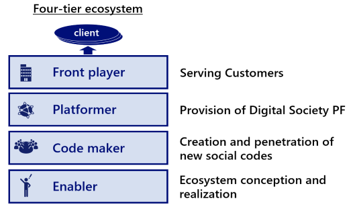
Front players are those players that provide services to the end customer. Platformers provide a platform for the front players (e.g. carbon footprint tracing systems). Code makers can be defined as organizations such as governments, local authorities, trade associations, or agencies such as advertising agencies. The most important one is the Enabler. The enabler's role is to design the entire ecosystem, which enables sustainable commercialization.
NRI would like to act as an enabler and a platformer in this model and wants to create an ecosystem.The
reason why
NRI can succeed in this role is because of its core business areas. The first one being a think tank
that works on
identifying problems and designing policies etc. Another one is Con-Sol (Consulting and IT solutions)
which enables
the implementation of DX.
Here, I can proudly say that we are currently working on a lot of DX 3.0 projects, some are already in a
state of
PoC (Proof of Concept).
Example 1: NRI is acting as the secretariat for coordinating and facilitating in support of the “GX League” which is the Ministry of Economy, Trade and Industry’s efforts for a decarbonized society. In addition to that, NRI is one of the 566 participating companies (as of September 2023) in the GX League.
(Ref.)
GX
League(External
Site, Japanese ony)
Sustainability
book: In
charge of overall coordination for the GX League initiative
Example 2: As part of the WBCSD Partnership for Carbon Transparency (PACT), NRI collaborated with Hitachi (a storage supplier) and EIZO (a desktop monitor supplier) to utilize the NRI-CTS in tracking greenhouse gas emissions based on actual measured values.
Example 3: Initiatives related to addressing Japan's aging social infrastructure, particularly its aging roads. Roads in Japan were extensively constructed between 1950 and 1970 and are now over 50 years old. We aim to solve this problem, which poses a significant burden on local authorities in terms of both human and financial resources. Our approach involves shifting from reactive maintenance to preventive maintenance by using sensors to scan the roads and create a digital twin. NRI's role is to provide the digital twin and drive digital transformation (DX) in the industry.
Mr.Bakker (WBCSD) : Thank you, Mr. Noguchi, for sharing such a detailed overview of
NRI's four-tier
model and the innovative projects you're involved in. NRI is taking a proactive and innovative approach
to address
various critical issues.
I'd like to discuss our climate-related solutions, which encompass a range of initiatives. We are
actively working
on
climate change solutions, including the implementation of the greenhouse gas protocol, the development
of Scope 3
accounting through PACT, and a comprehensive system for accounting and reducing avoided emissions.
Furthermore, we
are
in the process of constructing an accounting system to track emissions within supply chains.
Simultaneously, the
ISSB
(International Sustainability Standards Board) is developing an accounting and disclosure framework
closely aligned
with
Scope 3 standards under the greenhouse gas protocol.
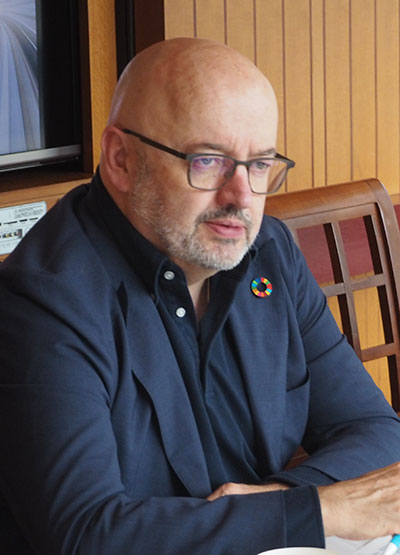
On September 18, the Final TNFD (Task Force on Nature-Related Financial Disclosures)
recommendations were
released in New York, sparking discussions about defining the matrices companies should measure
and manage.
Notably, the ISSB has set a 2025 deadline for the publication of the biodiversity disclosure
framework. This
timeline is significantly shorter than what we saw for climate change. A similar challenge
arises in
measuring biodiversity impact and dependencies, particularly in the context of Scope 3. It is an
area that
demands collaborative effort and innovative solutions like yours to avoid overwhelming
businesses.
In addition, in the circular economy, there is increasing pressure to promote recycling and the
reuse of
materials, yet the challenge of measuring circularity and effectively communicating our progress
continues
to be a matter requiring further attention.
I foresee NRI's role evolving in the climate platform, progressing into more of a platform
status. However,
when I consider other topics like natural capital or circularity, we are still largely in the
early stage.
But, I would say that NRI's business model stands out globally as a company that explores new
concepts and
delivers them as consulting and software solutions.
Key Issues for the Future
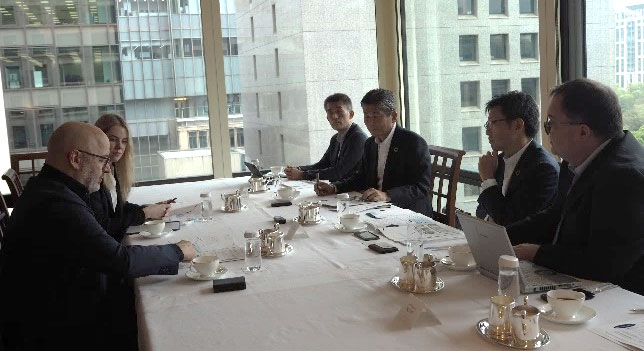
Noguchi(NRI): Currently, our main focus is on the Climate bundle and CFO network in PACT. We are grateful for your PACT teams' work in presenting the interim report during New York Climate Week. This has helped us collaborate with suppliers and integrate them into our NRI CTS platform, offering valuable data connection opportunities through the Pathfinder Framework.
Mr.Bakker (WBCSD) : Addressing one of the primary challenges in PACT, we need
to go beyond
developing PoC and implementing our technology solution. The key question here is how we can
adapt this
system to cater to the needs of small and mid-sized companies.
While the concept of avoided emissions might not seem immediately compelling, as we move into DX
3.0, we can
leverage digital solutions to help our clients reduce their climate impact. This approach holds
significant
potential for reducing emissions, but the next challenge is connecting avoided emissions
accounting to
financial markets, as substantial capital seeks sustainable investment opportunities. We believe
that a
robust avoided emissions accounting system could become the preferred standard for investors.
Furthermore,
the focus on nature is growing in importance, particularly with the release of the TNFD. The
question now is
how to incorporate nature-related metrics into discussions around Scope 1, 2, and 3
emissions.
In New York, we recently launched The Global Circularity Protocol. It is all about creating a
greenhouse gas
protocol and a system to help companies track and improve how circular their products are.
Achieving a true
circular economy involves multiple companies working together. It is not something one company
can do alone.
For instance, in the fashion industry, where nature and the climate are heavily impacted due to
intense
farming and quick product turnover, we are collaborating with a major fashion brand to promote
circularity.
Success here depends on collective efforts by brands and retailers to set up a comprehensive
collection
system and efficient return process. This also generates a high demand for digital support
services and
business opportunities.
Noguchi(NRI): In the context of the circular economy, I believe there are three
distinct levels to
consider: product, component, and material.
The product level is established to a certain extent. However, at the component level, standardization
is a major
challenge. The material level, especially with plastics, presents another challenge due to the
difficulty in tracing
additives. To establish a true circular economy, a digital system connecting the entire supply chain,
including both
positive and reverse supply chains, is essential. Effective code-making for data exchange is a vital
part of this
transformation.
Our distinctive feature is our collaboration with leading companies in a variety of industries. For
example, our
collaboration with major automobile manufacturers and retailers leads to the decarbonization of the
entire supply
chain. In DX 3.0, our primary aim is to collaborate with companies to have a meaningful influence on
society.
Initiatives like establishing codes within supply chains play a pivotal role in the development of a
circular
economy by promoting standardization, a critical element for its success.
At the end
Mr.Bakker (WBCSD) : I appreciate your insights and solutions.
Even though we have different roles and mainly deal with big companies, we are alike in some
ways. It is
true that nearly all small and medium-sized businesses are linked to the supply chains of larger
companies.
If we can make digital solutions that are easy for smaller companies to use and fit into the
supply chain,
we can create solutions that work for everyone, including those smaller companies.
I would say that, when a company joins WBCSD, it usually takes some time to get to know how the
organization
works and what it can offer. Companies often start by getting involved in one or two specific
areas, like
your work on PACT. These projects benefit both the company and WBCSD, and they can lead to
expansion into
other important areas, that align with their plans.
I look forward to deepening our collaboration and I would appreciate your guidance on our next
steps and how
we can best assist your organization.
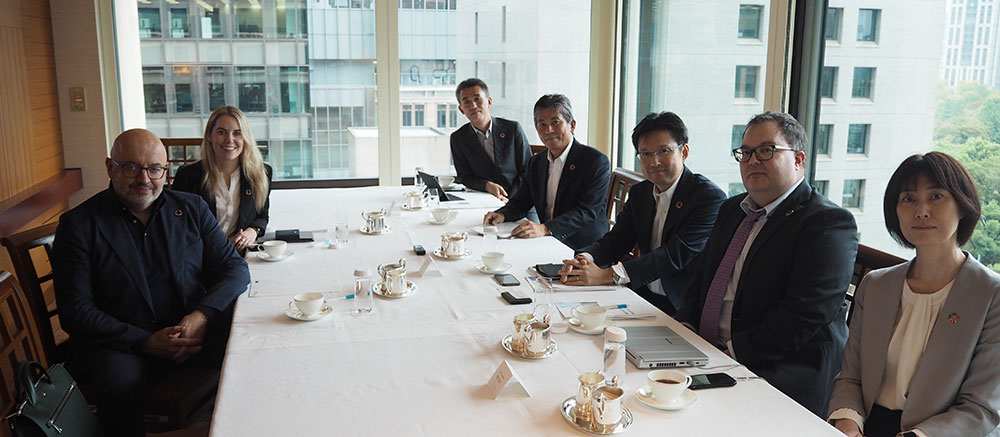
Ms. Laurette Siemonek(Chief of Staff) From right row front, NRI Eiko Ibuki
(General manager, Sustainability & Responsibility Department)
Lawrence Hale Sterling
(Corporate Communications Department)
Takeshi Hihara
(Senior Corporate Managing Director)
Tomohiko Noguchi
(Senior Corporate Managing Director)
Wataru Sakakibara
(General manager, DX Business Promotion Department)